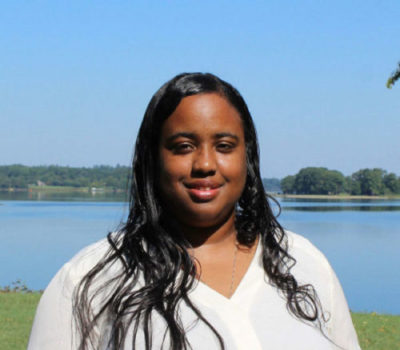Shanen Sherrer is an Assistant Professor of Biochemistry at SMCM. She joined the college faculty in August 2017. After earning a B.S. in Biochemistry at Miami University (Ohio) and a Ph.D. in Biochemistry at the Ohio State University, Shanen completed a postdoctoral fellowship at Duke University.

I sat down with Shanen for an interview to learn more about her research–and to get a crash course in the basics of biochemistry. For starters, an introduction to what exactly biochemistry is.
For the novice, how do you define biochemistry?
Biochemistry means describing what you see in nature (biology) in terms of chemistry. For example, a biologist may look at human nails and record things like their growth and appearance. A chemist would observe the structure of the nail, identifying the minerals and elements in nails. A biochemist will combine these concepts, conducting experiments that search for reasons why nails are growing, such as looking for the absence or presence of particular chemical elements.
Tell us about your research experience (please).
As a postdoctoral research fellow at Duke, I worked with Paul Modrich on DNA mismatch repair and its relationship to preventative cancer treatment. While I was there, Modrich won the Nobel prize for his research and I had to dodge some persistent reporters!
During my doctoral studies, I worked with Zucai Suo conducting research on enzymes and the time scale of reactions. I also managed the work of undergraduates and other postdoctoral students because, according to Dr. Suo, I was one of the few people who told him no for some research requests! My research at this time led to 12 publications, and for 6 of these I was first author (meaning I was the primary researcher and writer for these). Despite never having touched a human heart in the lab, I had a fellowship with the American Heart Association–I learned from this that the worst thing to do is never apply.
Before this, I worked with Ann Hagerman, best known as the author of the Tannin Handbook. My research with her involved characterizing the tannins in Lipton iced tea as well as other plants and an exercise study of the oxidative stress in rats. Unfortunately, it was from this study that I learned I’m allergic to rats, so the research I pursued after this point doesn’t involve any interaction with them. I did also learn how to manage a lab and that I can do great research in a small setting, like at SMCM. It was at this time the teaching bug was planted too.
What are your current research interests?
I have a continued interest in DNA mismatch repair and its relationship with particular metals; for example, why the presence of zinc may be effective in treatment against cadmium exposure only up to a certain point.
I’m working with several students as they conduct research and experiments for SMP projects. One student, Martin Yepes, is working on research related to DNA mismatch repair and the impact cadmium has on the development of cancerous appearances. Another student, Danielle Spaulding, is studying glyphosate, the main ingredient in weed killers like Round Up, and the ways it can cause health concerns by replacing the glycine in the body. Kelly Healy is mapping metal binding sites on proteins using protein modeling software, molecular biology and fluorescent spectroscopy. Julian Heller is working on applying Kelly’s methods to a DNA mismatch enzyme.
How does the library help you in your research or the classroom?
In the classroom, students complete a bio-informatics project that uses library tools to find substantive sources that explore a subject beyond the surface level. Students in this class learn about approaches like using InterLibrary Loan (ILL), completing subject searches, and other librarian secrets to success.
In my own research, I have used ILL countless times. I have my own library on Google Classroom that contains over 2,000 articles I’ve accumulated. When I work with students on research projects and SMPs, I usually direct them to pick a few articles of interest as they form hypotheses and find related information through searching library databases.
What’s one thing you think students or faculty should know about the library?
The use of the library is in your best interest to avoid wasted effort. It’s easier to read a paper than to spend a year in the lab only to realize your topic isn’t feasible or already solved.
What have you read lately that you’ve found interesting?
I have a couple of articles sitting on my desk about oysters and exposure to metals (for example, through environmental pollution). Once the metals are absorbed by the oyster, they can reduce their resilience to changes in temperature, which is one reason climate change can be so devastating for certain oyster populations. When people ingest these oysters, the contaminant can affect us too.
What’s your favorite class you’ve taught?
Advanced Biochemistry. This is a lab without a lecture attached, which can be intimidating, but it gives students the chance to really feel like biochemists. Students conduct 3 experiments that are essential to biochemistry: a Western blot, protein purification, and enzyme experiments.
If you could invite anyone, dead or alive, to guest lecture in your class, who would it be?
Baldomero Olivera. He’s known for his studies of poisonous snails and their chemical make-up, which has led to medical applications in the development of pain medication. He always shows up with a big bag of snail shells and probably has a lot of great stories to share about dives in the Caribbean.
What else would you like our readers to know?
I have several reputations (that I’m aware of). One is being known as “UV eyes” because I’m very sensitive to subtle color changes in solutions that others don’t always see. I’m also the person who has survived living in a haunted dorm with a ghost for 2 years at Miami University. People may also know me for bringing my bird into the office, where she gets to roam freely (don’t worry–she’s potty trained!). She’s not very talkative now, but you might hear some sound effects from her if you’re lucky!

[…] 4/23/2019 Share Your Work: An Interview with Shanen Sherrer […]